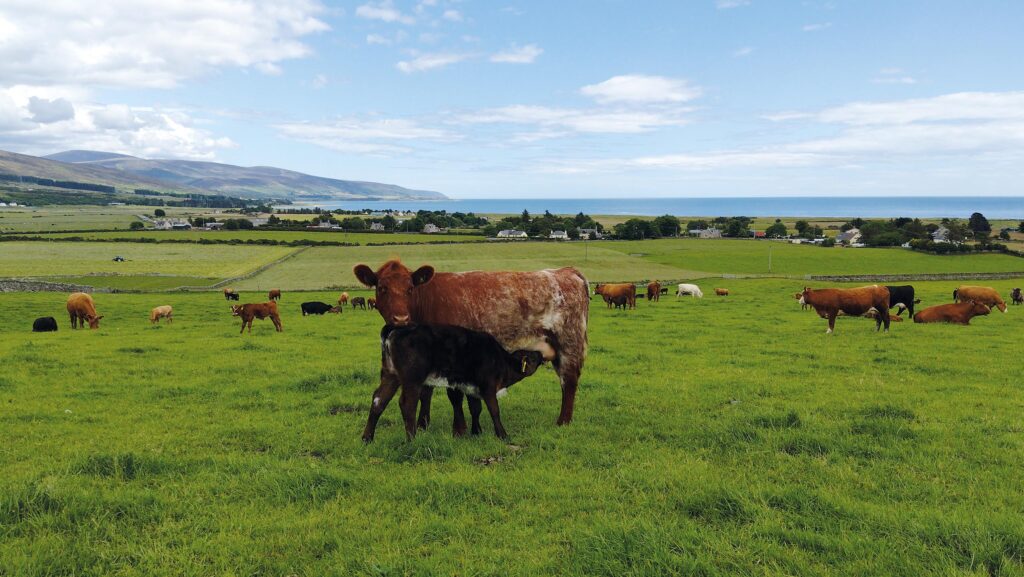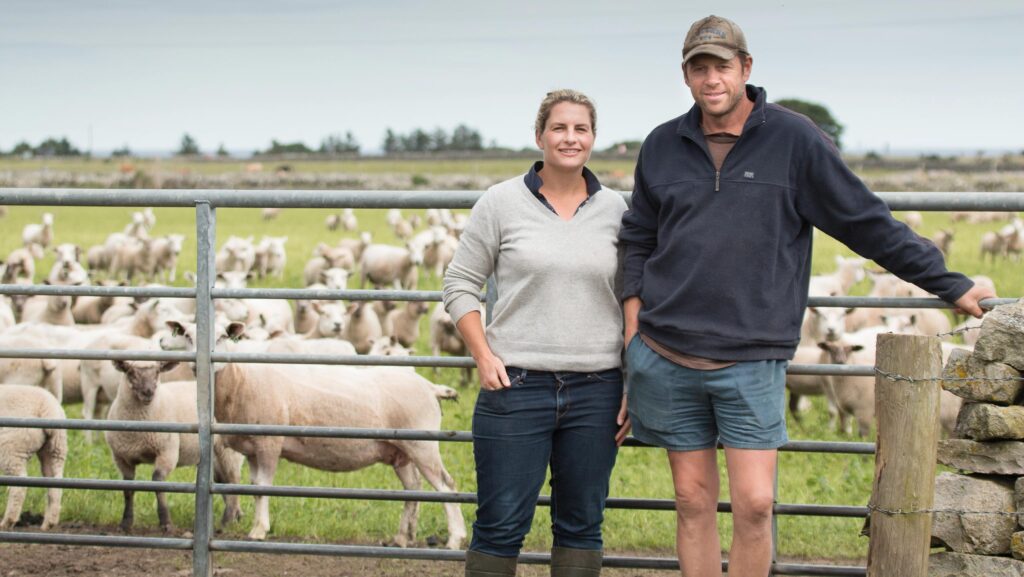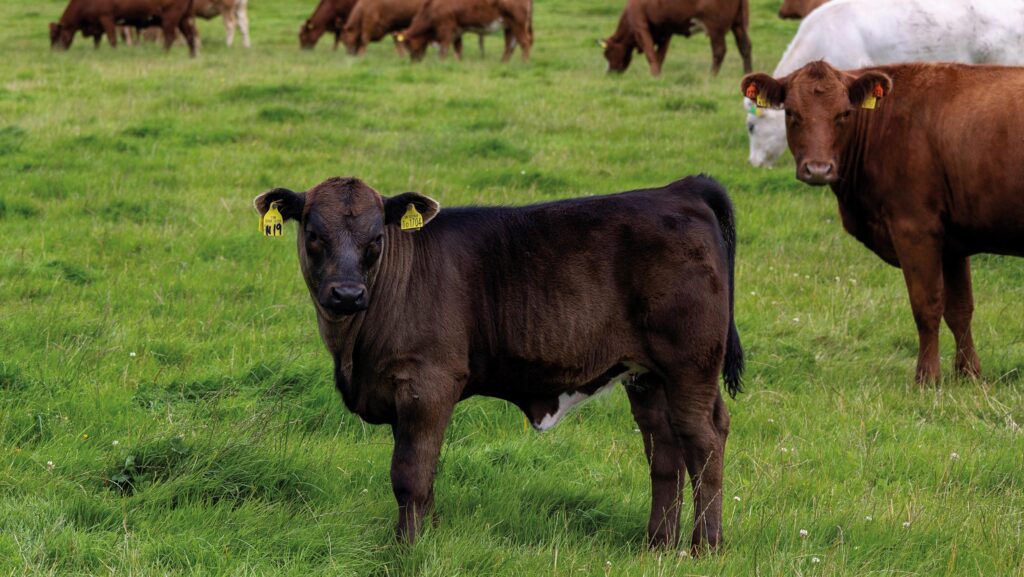How a Sutherland suckler herd achieved a compact calving
 © Clynelish Farm
© Clynelish Farm Scottish farmers Vic and Jason Ballantyne have condensed their calving period of 10 weeks in recent years, to seven weeks over the past two seasons.
This is contributing to a profitable suckler enterprise by minimising labour and enabling them to make the best use of their grass growth curve.
The couple, who are tenants at Clynelish Farm, a 121ha (299-acre) farm in Sutherland, run 105 suckler cows and 650 maternal ewes.
Vic says their “no-frills” farming approach and desire for a good work-life balance have shaped their “low-input, moderate-output” system.
See also: 4 essential checks to improve suckler herd efficiency
Farm facts
Clynelish Farm, Brora, Sutherland
- 121ha, tenanted
- 650 white-faced maternal-cross ewes (Aberfield and Cheviots mated to Highland and Romney rams) with store lambs sold privately
- Manage 200 sheep on 12ha of common grazing
- 40 weaned native calves bought from a neighbouring hill farmer to improve grass on common land. Sold at Dingwall Mart or privately as forward stores weighing 435kg
- 105 Angus and Stabiliser suckler cows
- Suckler progeny sold as weanlings or as stores
- All breeding stock bought directly from farms
They are on track to calve in six weeks next season.
“We would have been at six weeks this year, but we used two young bulls, and we thought it would be a bit too ambitious to take them out after six weeks of breeding,” says Vic.

Vic and Jason Ballantyne © Clynelish Farm
Calving and lambing start outdoors on 18 April. Lambing lasts 22 days and calving 49 days, with 85% of cows calved in four weeks.
This plays to the strengths of the coastal grassland farm, allowing the couple to kick-start their leader-follower grazing system when grass growth peaks from May to July.
Making grazing easier
Sheep and cattle are set stocked at lambing and calving.
They are then mobbed into groups, with sheep running in front of cattle on two-day shifts until lambs are weaned in July. After this, cattle become a priority.
Explaining their logic, Vic says: “People overestimate what a cow needs when she calves.
“She only has a wee calf, compared with a ewe with twins or triplets much closer to her size.”
A tight calving also means they can focus on sheep work and silaging for the rest of the summer rather than waiting for stragglers.
“For us, it is about having a manageable system.
“Once that calf is born, we don’t need to do anything else until we wean them, so we can focus on the sheep,” she adds.
A tight calving has reduced calving interventions, too.
“It was always cows calving into June and July that would have difficulties, as after two months at grass they were getting too fat.”
The numbers
234kg Weight of calves at 180 days (weaning)
95% Target conception
92% Cows in-calf that were put to the bull
96% Calves weaned from scanning
715kg Average mature cow weight
Breeding policy
Easy-calving genetics are a prerequisite.
They have moved away from continental bloodlines towards native ones, to ensure cows calve easily and get back in-calf promptly.
Aberdeen Angus and Stabiliser bulls are selected for easy-calving estimated breeding values alongside daughter calving ease to ensure replacement heifers are fit for purpose.
The Ballantynes take a strict stance when it comes to culling for poor fertility and bad “teats, toes and temperament”.
They typically keep 15 heifers annually, as they have been growing the herd.
Vic says: “We are particular about keeping notes at calving time.
“We only culled five cows this year, mostly on udders, but one was for temperament.

© Clynelish Farm
“Jason tags calves in the field on the day they are born, so it is not worth having dangerous cows around.”
Cows are multisire-mated in two groups (Angus and Stabiliser) from 8 July for seven weeks, with two bulls running in each group.
Vic says bull power is “the best way to ensure a tight calving”.
They have no problem with fighting because bulls are wintered together outside and are familiar with each other.
“Having four bulls seems like a lot, but it acts as an insurance policy, and you don’t have to go and find bulls last minute if there’s a problem.”
Vet tips for a compact calving
Compact calving benefits disease prevention, improves average weaning weights and sale prices, and increases labour efficiencies, says vet Hamish Marsden from Clyde Veterinary Group, Stirling, part of VetPartners.
Hamish says achieving a tight calving block is possible by “getting basic management right”.
He adds: “Be clear on your goals. You need to be ruthless and remove cows from the herd that fall below your parameters.
“Cows are in-calf for about 282 days, giving you 83 days to get a cow back in-calf to hit a 365-day calving interval.
Typically, beef cows will return to service 50 days after calving.”
Below, he gives tips on how beef farmers can reduce their calving period.
- Scan cows one month after the bulls come out to give accurate calving dates, so later-calving cows can be identified.
- Body condition-score (BCS) in-calf cows two months before calving and adjust their diet to avoid thin or fat cows (target BCS 2.5 at calving).
- Approximately one in five bulls is sub-fertile. Carry out bull MOTs, ideally two months before breeding, to identify any issues and give enough time to replace or retest a bull. Use one bull for every 20 to 30 cows.
- Consider using fixed-time artificial insemination (AI) on later-calving cows to bring them into oestrus before 50 days.
- Identify high-risk cows (those that suffered a difficult calving, prolapse or calve later) and carry out a pre-breeding check on them with your vet. Heat detection using stickers, tail paints or collars gives a good indication of reproductive tract health.
- View management options as an investment, not a cost.
- Ensure infectious diseases that affect fertility, such as bovine viral diarrhoea, Johne’s and leptospirosis, are well controlled, and use easy-calving genetics to avoid difficult calvings.
- Tail-end cows typically have poorer fertility. Do not be afraid to cull these and take advantage of strong cull prices. Look to “retire” older cows with a planned exit from the herd.
- Set a goal at the start of the year and stick to the plan. A calving block can be reduced by four weeks each year and may take several years to reach target. Two shorter calving blocks are easier to manage than one protracted period.
